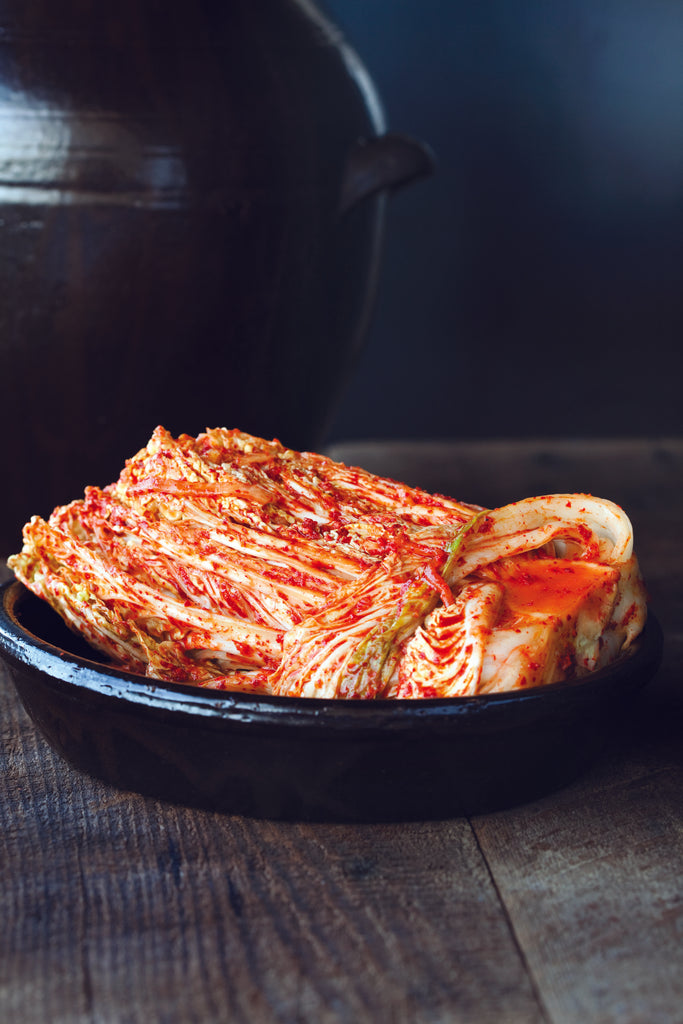Kimjang Poggi Kimchi
In Korean culture, Kimjang represents the last harvest of Napa cabbage before the winter chill sets in. It is a time for family and neighbors to come together to make Poggi Kimchi for the winter, while giving away the excess kimchi to people in need.
During the month of November while we celebrate Kimjang, a portion of the proceeds from all gochugaru sold on our site with be donated to The Ron Finley Project whose mission is "rejuvenate communities around the world through gardening, knowledge, and togetherness." We believe kimchi is for everyone, just as gardening should be.
We chose to celebrate Kimjang with gochugaru because it is the most important spice in the kimchi-making process. Gochugaru is not only important because it enhances kimchi with its spicy flavor, but because of the capsacin found in the chile flakes. Capsacin is the chemical compound in chile that helps the long-term fermentation process by preventing bacteria growth and sustaining acidity.
We encourage you to make your own Poggi Kimchi during Kimjang using this recipe!
2 medium heads (4 to 5 pounds total) Napa cabbage
2 tbsp. kosher salt
2 tbsp. salted shrimp
1/3 cup sweet rice flour porridge (recipe below)
1/4 cup fish sauce
1/4 cup beef stock
2 tbsp. minced garlic
1 tbsp. peeled, finely grated ginger
2 tsp. sugar
2/3 cup Gochugaru chile flakes
1/2 cup yellow onion, thinly slices
4 green onions, green parts only, cut into 2-inch pieces (about 1/2 cup)
3 oz Korean chives or 1/2 bunch European chives, cut into 4-inch pieces (about 1/4 cup)
6 to 8 fresh oysters (optional)
For the Brine
1. Cut the cabbage into quarters, and then cut each quarter in half lengthwise and cut out the core. Lay each cabbage segment flat, then quarter into sections about 1 inch wide by 6 inches long. If some of the leaves are too wide, cut them to approximate proportions.
2. In a large bowl, toss the cabbage with the salt and set aside to brine for 1 hour and 15 minutes. Rinse off the salt in a bowl of cold water and let the cabbage leaves drain in a colander for 20 minutes.
For the Sweet Rice Flour Porridge
1. Prepare an ice bath. In a small saucepan, bring 3/4 cups of water to a boil.
2. Meanwhile, combine 2 tablespoons of of sweet rice flour with 1/4 cup of cold water.
3. Whisk the flour mixture into the boiling water and stir for 15-30 seconds until teh mixture thickens and resembles white school glue. Remove from heat, set in ice bath to cool, and allow to come to room temperature, stirring, 5-10 minutes.
*If making ahead, transfer the mixture to a container and refrigerate util needed. Sweet rice flour porridge will keep for up to 3 days, refrigerated.
For the Seasoning Paste
1. To make the seasoning paste, in a mini food processor fitted with a metal blade, puree the salted shrimp, rice flour porridge, fish sauce, beef stock, garlic, ginger, and sugar. Transfer the mixture to a bowl and add 1/4 cup of the Gochugaru chile flakes and mix by hand. Let the seasoning paste sit for 15 minutes to let the flavors combine.
For the Assembly
1. In a large bowl, toss the cabbage, yellow onion, green onions, and chives with the remaining Gochugaru chile flakes until the chile flakes lightly coat the vegetables.
2. Add the seasoning paste and oysters (if using) and mix until evenly distributed.
3. Pack tightly into a 2-quart container, cover, and set aside for up to 2 days at room temperature. Then move the container to the refrigerator. You can also eat the kimchi immediately, but we prefer the slightly aged, fermented taste. As it ferments, cabbage will expand, so be sure to place the jar on a plate or in a bowl to catch the overflow.
*Recipe and image reprinted with permission from The Kimchi Cookbook: 60 Traditional and Modern Ways to Make and Eat Kimchi by Lauryn Chun, copyright 2012. Photo credit: Sara Remington. Published by Ten Speed Press, a division of Random House, Inc. All rights reserved. Available wherever books are sold.

